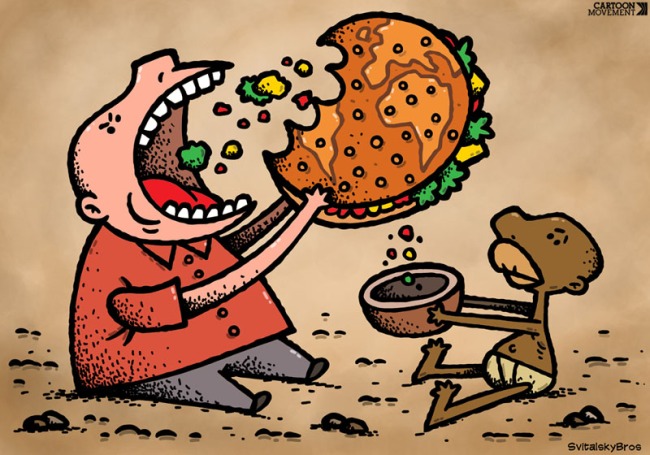According to Ian Woodward, a basic understanding of consumption can be seen to emphasise the purchase and use of goods and services. This definition, whilst maintaining an almost black and white perspective, is entirely valid. However, one could argue that the process of consumption can be seen to contain so much more. For example, in a post-modern consumer society, consumerism has the quality to define identity, and thus the means to mould an individual’s lifestyle. Woodward writes that ‘consumption […] is about meaning-making, and the opportunity to perform, affirm, and manage the self in relation to others’. Based on everyday observation, within a society, the clothes we choose to wear, the products we choose to utilise, and the media we choose to absorb are all chosen, most likely, in the name of individualisation. This brings us to the Frankfurt School of thought and critical theory.
Unlike in Marxist theory, within which Marx claims that the understanding of production is pivotal to the comprehension of society, Adorno and the Frankfurt School argue that it is the ‘object of consumption’; the commodity, which is vital for this very purpose. This is clearly evident in westernised culture. It can be argued that consumer society is here and now, and it is a society in which ‘the aestheticisation of everyday life’ and hedonism play an important role via the process of consumption. And what better place to practice consumption than in a shopping mall?
In a qualitative study named Social control and the management of ‘personal’ space in shopping malls (2005), John Manzo visits a mixed bag of shopping centres in an attempt to gain an understanding of human behaviour in consumer spaces; in particular the food court. This study, coupled with a focus on methods of social control in accordance with centre design elements, makes for an interesting read. In his study, Manzo asks why these spaces are not sprawled with deviant acts. Other than security staff on ‘foot patrol’ and the many CCTV cameras installed, self-regulation seems to be the norm.
Manzo’s findings indicate that in order to employ a design that facilitates social control, a consumer centre must be built around a grouping of ‘pseudo-corridors’: spaces which lend themselves to a ‘street-scape’ sensibility, thus, one could argue, creating a sense of the much loved traditional outdoor shopping strip. Not only does the centre’s aesthetically pleasing environment create a welcoming haven for consumer behaviour, but its shoppers are led along a string of pseudo-corridors in the hope of maximising traffic flow efficiency.
Manzo, however, finds the design elements of a food court to be quite different. Instead of the obvious path along a string of merchant sellers, the food court acts as an ‘anchor’ in which the divisional path is much more subtle. For instance, the tiles on the floor in accordance to where the tables and chairs are placed may indicate division, thus directing the consumer in a particular fashion. This method indicates that the food court is, what Manzo calls, a ‘sphere of activity’, in which consumption is encouraged but lengthy stays are not. Another clear indicator of this lies in the food court’s seating arrangement. Most, if not all, seats are for either a single individual or paired couple; food courts are not meant for social functions or large gatherings. This push for movement and flow is evident in most consumer spaces, one needs only to visit their local shopping centre for proof. Manzo’s final finding in his study of social control in accordance with design shows that food courts are an open space. Much like Bentham’s Panopticon, food courts promote self-regulation, therefore allowing people to adjust their behaviour in accordance to the norms of their particular role as consumers and members of a civil society.
John Manzo’s second research endeavour in this study aims to discuss how patrons within a food court make claim to their surroundings through methods of procurement. For instance, Manzo discovers that men, in particular of European ethnicity, attempt to lay claim to large portions of the space as their own. This can be likened to the stereotype of an elderly man, reading his morning paper in the corner of an authentic Italian coffee shop, except there is no corner to lay claim to, only tables in an open space. This sense of ownership isn’t limited to men of ethnicity. Women, men, children, and teenagers are found to exhibit individual behaviours which indicate a want to transform public space into a private one. In actuality, Manzo finds that even if an individual isn’t sitting in the chair or table itself, their items tend to be laid out regardless, as if to indicate ownership and control over one area. This act, when ‘breached’ by another individual’s invasion of space, is met with confusion and, at times, avoidance of eye contact, and mumbled replies. The deviant might then apologise and be on their way. This indicates a clear sense of self-regulation.
In conclusion, the consumers within a food court not only act in accordance to how they are expected to act within a public sphere, but also act as if to presume ownership of their surroundings. Manzo’s research has found, with clear evidence, that the food court ‘demands consumption and limits agency on the part of anyone except the mall’s commercial interests’. However, his research also finds that people self-regulate, with a demand for personal space despite their location. This study also shows that design does facilitate social control but to a certain extent. One can plainly see a clear example of agency within the individual consumer them self, however, social behaviour is evidently influenced by social control, both by design and the norms of society.

